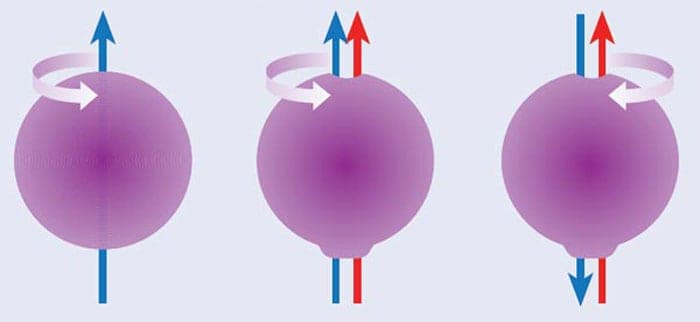- The University of Colorado conducted an experiment to investigate an electron’s electric dipole moment (EDM).
- This EDM measurement could help explain why there is more matter than antimatter in the Universe, which contradicts the Standard Model of particle physics predictions.

Understanding Electron’s Electronic Dance Music
- EDM (Electronic Dipole Moment): An electron’s EDM is a measurement of how its positive and negative electrical charges are dispersed. Consider it like a bar magnet: it demonstrates how asymmetric the charge distribution is within the electron, as if the negative charge (electron) within the particle is not perfectly centred with regard to the positive charge (proton).
- Primary Particles: Electrons are the most basic and smallest building units of matter. Their EDM is a crucial notion in particle physics because it allows scientists to investigate violations of fundamental symmetries including time-reversal symmetry and charge-parity symmetry.
Asymmetry of Matter and Antimatter
- Matter and antimatter are particles that have opposite charges but comparable characteristics. The Standard Model predicts that during the Big Bang, equal amounts of matter and antimatter should have been generated, but this is not what we see in the Universe.
- Annihilation occurs when matter and antimatter collide and annihilate one other, producing energy. This begs the question of why there is still matter around us, given that both should have been entirely annihilated after the Big Bang.
Measuring the EDM:
- By measuring the EDM of an electron, scientists may detect whether the electron’s charge is precisely centred or slightly off to one side, suggesting charge separation.
- Time Symmetry Violation (TSV): If an electron’s EDM is non-zero, it indicates a breach of time symmetry, which means that the behaviour of particles changes when time is reversed. This violation may hold the key to explaining the matter-antimatter asymmetry.
This dichotomy’s thesis: Sakharov’s Conditions
- Andrei Sakharov offered three requirements to explain why there is more matter than antimatter in the Universe:
- Violation of the Baryon Number: Some operations defy the conservation of baryon number, producing more matter than antimatter. Baryons are particles that are similar to protons and neutrons.
- Violation of C-Symmetry and CP-Symmetry: Because to violations of charge conjugation (C-symmetry) and combined charge conjugation with parity (CP-symmetry), certain processes treat matter and antimatter differently.
- Out-of-Equilibrium Processes: Certain processes occur outside of thermal equilibrium, preventing full particle annihilation and resulting in an excess of matter.
Complex Experimental Setup:
- To control and monitor the EDM of electrons confined inside molecule ions, the researchers used complex techniques including magnetic fields, lasers, microwaves, and radiofrequency fields.
- EDM Bound: The experiment established a limit for electron EDM, suggesting that it is approximately 2.4 times greater than previously measured and approximately 1 billion times greater than expected by the Standard Model.
Implications and Prospects for the Future
- Looking for New Physics: The measurement of the electron’s EDM opens the door to novel physics beyond the Standard Model.
- The role of EDM measurements in explaining asymmetry: The information gathered from EDM measurements could drive future high-energy particle colliders to produce particles that violate temporal symmetry, allowing us to understand why there is more matter than antimatter in the early Universe.
Source: https://www.nature.com/articles/s41586-018-0599-8
